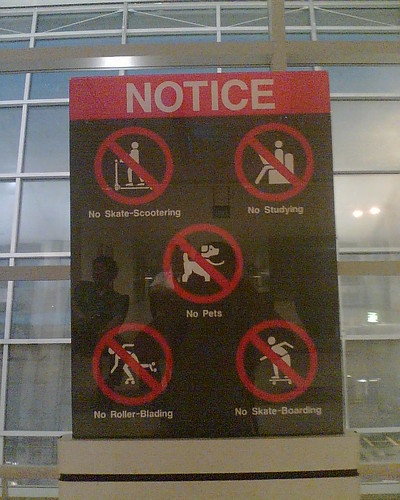For decades, three markets have consistently dominated the ad sector -- New York, LA, and Chicago -- yet a growing percentage of industry dollars are coming from other cities that aren't historically associated with the advertising and media businesses. These are the second cities.
.jpg)
I use the term "second cities" with respect and affection (and in the same spirit as the name of the leading comedy troupe in the country). By second cities I mean markets like Atlanta, Dallas, Charleston, Minneapolis, and Seattle where some strong agencies are based. (San Francisco straddles the line -- it is far smaller than the "big three," yet it is home to a number of major agencies and offices.) This piece is about such agencies -- shops trying and, in some cases, succeeding as major national players. Some say second city agencies face different challenges and opportunities. Let's take a look at what it means to be second city, and whether it matters.
Getting into pitches
Winning new business has always been a primary concern for agencies, wherever headquartered. For this article, I spoke with 23 people and most acknowledged that being a second city can affect their ability to get into pitches.
A leading pitch consultant, who asked not to be identified, believes the reluctance of some brands to consider second city agencies stems from perceptions about scale and expertise, in addition to vanity.
"It can be hard to convince some clients to consider [a] second city agency because of fear they lack the resources [and] expertise to serve major accounts. They may also question whether an agency keeps up with digital innovation. Sometimes it comes down to emotional factors, like wanting to feel 'big time', or reluctance to travel to 'Omaha' for meetings."
Quite a few of the folks I spoke with acknowledged that they get their share of questions regarding resources. Most believe that this sort of concern is an issue of perception versus reality.
Tamara Bousquet, Executive Media Director for San Diego-based MEA Digital, said:
"I'd bet my job that our work, our people, are better than most that come out of leading cities and shops. Our clients, who have been working with us for 4 plus years, 8 plus years, are getting better work than they've received at other agencies. These long-standing partnerships are proof of our staff and agency's excellence."
Smart second city agencies recognize opportunities to take advantage of their location by differentiating themselves from the dozens of medium-sized New York shops. Consider Richards Group -- it's spent years selling Dallas as a reason why they are so adept at persuading Middle America.
Recruiting and retention
When you run an agency, you need a host of skills sets. Many people with desirable skills choose to live in leading ad markets. That being said, a number of great people are unable or unwilling to live in Chicago, Santa Monica, or Chelsea.
Such people are not evenly distributed in every city and town. It's certainly no accident that many agencies locate in tech hubs and college towns with strong technology and marketing programs. Steve Parker, Jr., co-founder and managing partner of Levelwing, pointed to Charleston as a perfect example:
"Our largest office is in Charleston, SC. Although many see Charleston as a destination for vacation, it is home to some large and highly sophisticated technology businesses such as Blackbaud, Benefitfocus and Boeing. Additionally, many software companies are based here. Colleges such as The Citadel, Charleston Southern University and College of Charleston are part of our community. Close-by Clemson University and the University of South Carolina have strong mathematics, engineering and technology programs. In December 2009 Forbes rated Charleston as the 8th Smartest City in the World."
This leads us to the subject of salaries and retention. There's an urban legend about an AMP who started in Manhattan making $13,000 a year, lived with 11 others in a studio, and ate nothing but ad-network-branded Tic-Tacs for a year. In reality, ad people in the top markets make significant coin. But when you buy your Tide at Gristede's, the "fat" paycheck doesn't go far. Most second cities are far less expensive. The chart below calculates the cost of living equivalent to $75,000 a year in Manhattan.

Those I spoke with emphasized that rather than offering people a precisely equivalent salary, they pay people to have a better life. Credit altrusim and the reality that an Atlantan wouldn't be willing to live in an apartment where they can stand in the center and touch all four walls.
No one I interviewed said that being in a second city automatically made for greater employee commitment, but several said that the issues facing major markets don't reflect their daily experience. According to Bousquet:
"I'm not dealing with the 'entitled'; those who think because they've worked in this business for 6 months they deserve a raise and a promotion. Our folks appreciate the opportunity to do great work on great brands with great people; we don't deal with the ego of younger employees that many large agencies in large cities say they deal with daily. In fact, our average employee tenure is 3+ years and that's something we're proud of."
Second cities and specialization
Detroit and Las Vegas are two markets highly focused on business verticals. While agencies there work across many sectors, they are most known for auto and hospitality respectively.
Shawn Rorick, President of LVIMA, suggested that hospitality defines a big part -- but not all -- of Vegas.
Shawn Rorick, President of LVIMA, suggested that hospitality defines a big part -- but not all -- of Vegas.
"It's a safe bet that an agency in Las Vegas is going to really understand the travel business. There are many world class experts in that sector here. Las Vegas marketers in particular can be more adept in getting insights through data collected by the casino/resorts. Recession made our community of professionals even sharper because it requires the utmost sophistication to maximize ROI."
Lissie Heinkele, a long time Detroit agency leader, considers regional expertise as particularly relevant.
"In auto, the three tiered marketing environment -- national, dealer associations, dealers -- is absolutely central to the business of moving metal. But there's more than that. Auto marketing is some of the most sophisticated in digital. You can more readily find uberexperts here. There's also a passion -- many of us are true "gearheads." When you're amping up for a major launch, having that passion for cars brings out the best in programs."
Being known for a segment has its challenges. "Sometimes people think we are all travel, all the time," Rorick said. "That can be a hindrance when you are working toward broadening your category base.""It can be challenging for agencies to overcome the 'category town' perception. But many Detroit agencies have clients far afield from the auto world. They serve these clients very well," Heinkele said.
oing business with partners
Many agencies in smaller markets report that fewer vendors visit them. These agencies experience fewer phone calls, "drop bys," and requests for meetings. Thus, it is arguably harder for second city shops to keep abreast of important developments because the companies creating them don't come knocking as often. While the internet certainly eases the strain, second city folks have to be more proactive about pursuing knowledge.
From the sell side, there appears to be great business in serving second city agencies. "It costs you a little more to get a rep to Dallas. But it's worth the expense. When you make the effort you find a high level of 'engagement' from the agency teams in those markets." said John Durham, CEO of Catalyst S+F and a long-time digital solutions sales leader.
Durham also notes that there is also a perception that second city professionals are better mannered.
"I appreciate manners. Agencies in smaller markets generally show a high level of professionalism. Mutual respect. It runs the gamut, but when you call on an agency in a second tier market, chances are the people will show up and engage."
Adam Bergman, Senior Account Executive for Yume, emphasized that there is real money to be made in such markets:
"Some of these agencies are a heckuvalot bigger than they seem. Being in New York doesn't necessarily mean a shop is big; being in a 'second tier' market doesn't prove that an agency is small. Additionally, many of these agencies are careful to stay at the bleeding edge of the industry -- to 'prove' that you don't need to be in Midtown to be redefining and shaping the industry."
More sellers are seeking local people to serve these second cities. Lynn Ingham, a leading digital marketing recruiter, argued that it's harder -- but not impossible -- to find great people in these markets.
"Many top-notch digital sellers are in the big three markets. There are a few in the other cities, but you need to dig deeper to find them. Over time we're seeing more great sellers native to these markets, and leading sellers trained in the big three markets deciding to move to other cities for a plethora of reasons."
Lori Xeller, Director of Digital Sales at Republic Media in Phoenix, believes the talent is definitely out there.
"It's true that the total pool of digital sellers might be smaller than a major market like LA or San Francisco, but they ARE out there. We've built a strong team by constantly keeping our eyes open for great talent and creating real career paths to keep our A players satisfied and growing. I've found that our digital sellers are focused on being long-term digital consultants for their clients so they have deep relationships. They are loyal to their clients and with their internal teams."
Managing the exit
Many second city shops are independents, and some hope one day to sell to a holding company. Proximity helps when you are trying to make your business known to would be acquirers. Mark Naples, managing partner of strategy and communications firm Wit Strategy, underscored the importance of developing a prominent agency profile.
"There are so many solid agencies out there. Getting noticed by would-be acquirers requires a clear strategy that will generate a distinct identity, rather than more broad awareness. For example, at the height of its powers a few years ago, CP+B had Alex Bogusky as the tip of its spear, smirking to us knowingly from the covers of national magazines. But, what is CP+B's identity today? For non-New York based agencies, it's harder to pull off getting the right kind of notice because proximity within a roughly 50 block radius drives a large measure of perceived importance to the trades and the holding companies. If the cool kids aren't seeing you on their playground, it's harder for them to accept that you might be cool too."
What clients say about second city agencies
When asked to draw some general distinctions, most of the clients I spoke with were careful not to make assertions beyond the experience they had with a particular shop. Most said that location had no real impact on the quality of work and relationship and that it's about the agency, not the city.
One acknowledged that the out of town "thing" did affect the perceptions during the pitch, but that daily experience with the team quickly mitigated their concerns:
"You always have vibes, gut feelings, and concerns when you are picking an agency. During our last RFP, we questioned whether a non-New York agency would 'get' fashion. We ultimately chose them because they seemed like they'd be great to work with. They really are."
Perhaps that's a fitting conclusion. After all, we are in the perception business. Although it may not be a "real issue," it is a genuine concern for some. Despite this, many second city shops are succeeding because ultimately what matters most is the quality of the team, not the address.ty shops are independents, and some hope one day to sell to a holding company. Proximity helps when you are trying to make your business known to would be acquirers. Mark Naples, managing partner of strategy and communications firm Wit Strategy, underscored the importance of developing a prominent agency profile.
Thanks to iMediaConnection for publishing this first.











